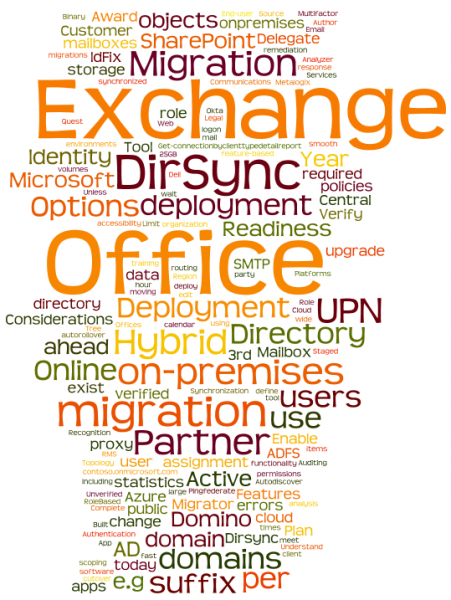Yesterday, we hosted a webinar on Best Practices When Migrating to Office 365. During the session, Shalini Pasupneti, a solution architect within Perficient’s Microsoft practice, first polled the audience, and found that more than half were not currently using Office 365.  Based on this, she gave a brief overview of what makes up Office 365, including the latest productivity services and apps in Microsoft’s public cloud. Shalini also covered specific features, including storage capacity of Exchange Online and SharePoint Online.
Based on this, she gave a brief overview of what makes up Office 365, including the latest productivity services and apps in Microsoft’s public cloud. Shalini also covered specific features, including storage capacity of Exchange Online and SharePoint Online.
Next, she discussed the many important factors that should make up a deployment plan, and provided several ways to assess your organization’s readiness to migrate, including a review of client readiness. For example, do client desktops meet the minimum requirements? And what versions of Office and IE are in use today? Is there a software deployment solution in place to deploy necessary Office 365 patches?
Shalini moved on to identity options, a topic that she is passionate about. Options include cloud identity, directory and password synchronization, and federated identity. She also reviewed Azure ADFS, and single sign on (SSO) apps like Okta On-Demand Identity and PingFederate.
Following this, she walked through source platforms vs. migration options, and explained the variety of third party migration tools. She described how to pick a migration solution (cutover, staged, or hybrid) and provided an assessment chart. There has been a lot of talk about hybrid solutions lately, and to address this, Shalini spent extra time covering hybrid features and deployments, and important deployment considerations.
Other topics that Shalini focused on around Office 365:
- Using PowerShell, mailbox migration script
- Office 365 management including role based access control
- Service health communications, monitoring with Exoprise
- Upgrade timing and the communication rhythm
The attendees asked many great questions, and Shalini had time to answer a large portion of them. You can view the webinar replay here, including the Q&A.
